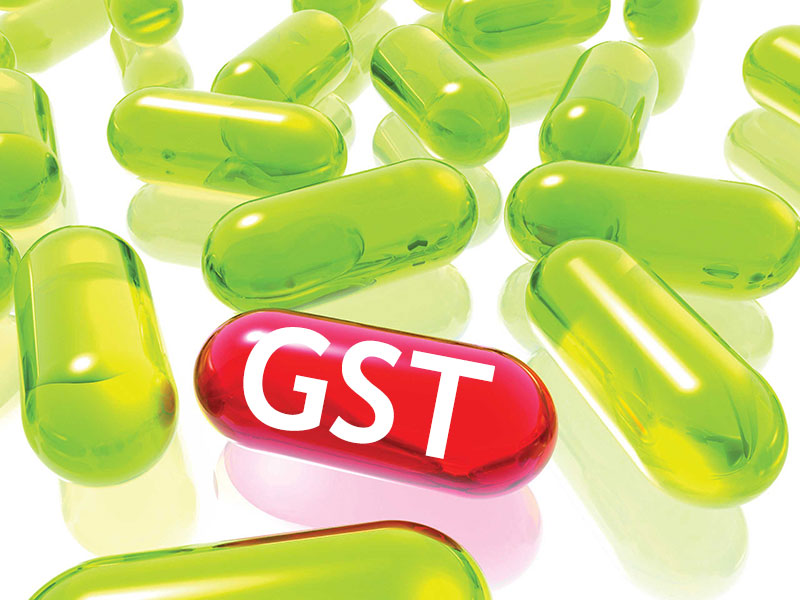
As GST is ready to roll out from April 2017 every industry has started to chalk out future strategies. In this blog we are trying to explain the impact of GST on Pharmaceutical industry. Before that let’s understand the dynamics of Indian Pharmaceutical industry.
- Indian Pharmaceutical industry represent 2.4% of the global pharmaceutical industry in terms of value and 10 % in terms of volume
- Expected to expand at a Compound Annual Growth Rate (CAGR) of 15.92 per cent from US$ 20 billion in 2015 to US$ 55 billion by 2020
- 3rd largest global generic Active Pharmaceutical Ingredient (API) merchant market, 2nd largest number of Abbreviated New Drug Applications (ANDAs) and is the world’s leader in Drug Master Files (DMFs) applications with the US
- Indian drugs are exported to more than 200 countries in the world, with the US as the key market. Generic drugs account for 20 per cent of global exports in terms of volume, making the country the largest provider of generic medicines globally and expected to expand even further in coming years.
Before describing the impact of GST on Pharmaceutical industry lets describe Goods and Service Tax (GST) in general.
What is GST?
GST stands for Goods & Service Tax is the biggest reform in Indian taxation system after independence. It is the subsumed of all direct and indirect taxes like VAT, CST, Service tax, exercise duty, additional excise duty, octroi and many more. GST will establish single taxation system in India and eliminate time, cost and effort needed due to multiple taxation and will give you the freedom to setup your distribution channel for speeding up time to market without having fear to loose input tax credit.
Impact of GST on Pharmaceutical industry
AS discussed above GST is subsumed format of all direct and indirect taxes, till now setting up supply chain was cost centric, but after GST, designing supply chain and distribution channel will be purely for speedup time-to market, minimize cost and optimum use of available resources. GST arrival will eliminate the need of having C & F agents or warehouses in every state to avoid CST. The integration of tax on Goods and Services through GST would provide the additional benefit of providing credit for service tax paid by manufacturers. There are also various services like logistics for shifting the input material to its final customers. Service tax is paid on the cost of such services too. With the implementation of GST, cost of any service, including logistics, will be considered as value add, and the manufacturer will get tax credit for the service tax paid.
India is a single common market. Under GST inter-state sales transactions between two dealers would be cost equivalent and comparable with stock transfers/branch transfers model. Inter-state transactions would become tax neutral, making India one single common market no longer divided by state borders. This will result in lower cost which can add to margins or can be passed on to customers.
This will provide complete freedom to the companies to explore strategic supply chain and distribution channel. GST will enable companies to consolidate warehouses, rationalize their networks and take advantage of economies of scale, improved efficiencies, better control and reduction in inventory. The companies can set up mother warehouses and regional distribution hubs like setting up a large warehouse in a place like Zirakpur, a large logistics hub with good infrastructure, a company can serve markets across the states of J&K, Himachal, Punjab, Uttrakhand and Haryana as against having five different warehouses to serve these markets.
GST will majorly impact to economies of companies. Logistics cost accounts for nearly 13-14 of our GDP. In which transportation, warehousing & storage , and inventory holding cost accounts as 35 %,10% and 25% respectively and remaining 30 % for others. Post GST system will reduce your cost on transportation, warehousing and inventory by 5-8 per cent, 10-12 per cent and upto 28 per cent respectively for each of the cost heads, leading to an overall savings in the range of 10-12 per cent of the total logistics cost.
As Indian Pharmaceutical industry is really looking forward to revenue growth on one side and the need to reduce costs, GST offers a great opportunity to revisit their supply Chain & distribution strategy to develop an agile, customized and cost-efficient supply chain.
